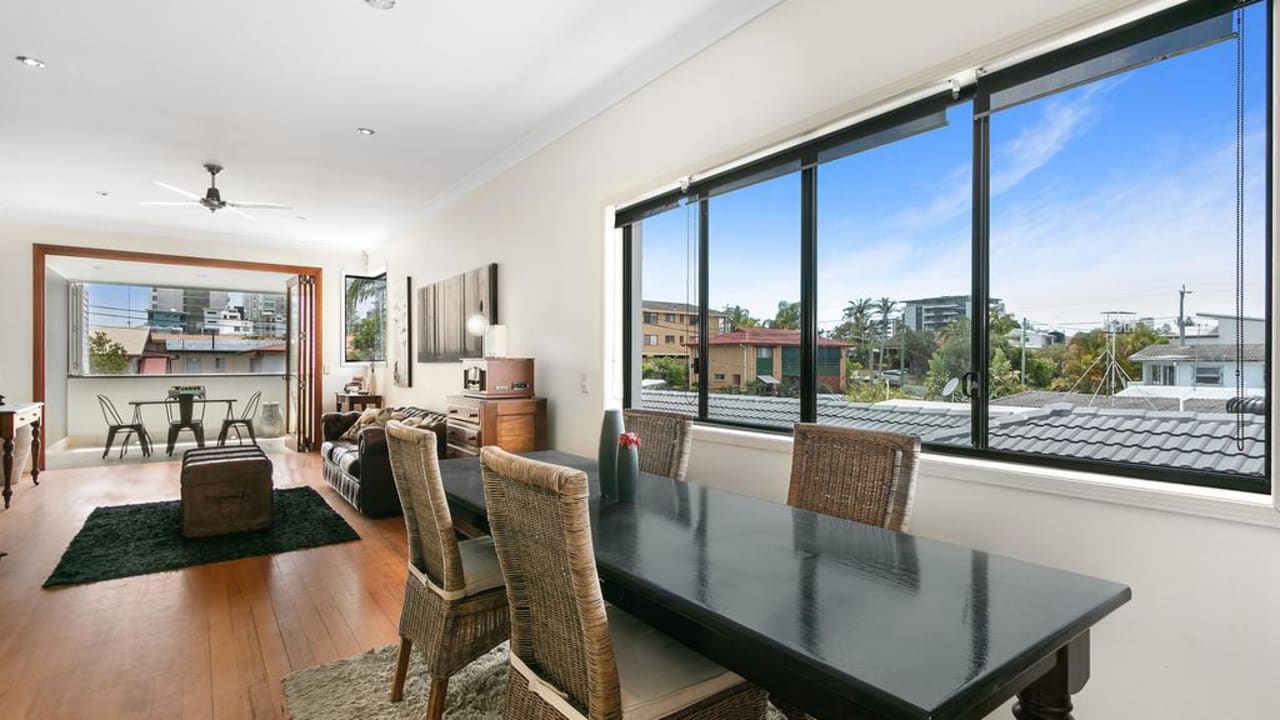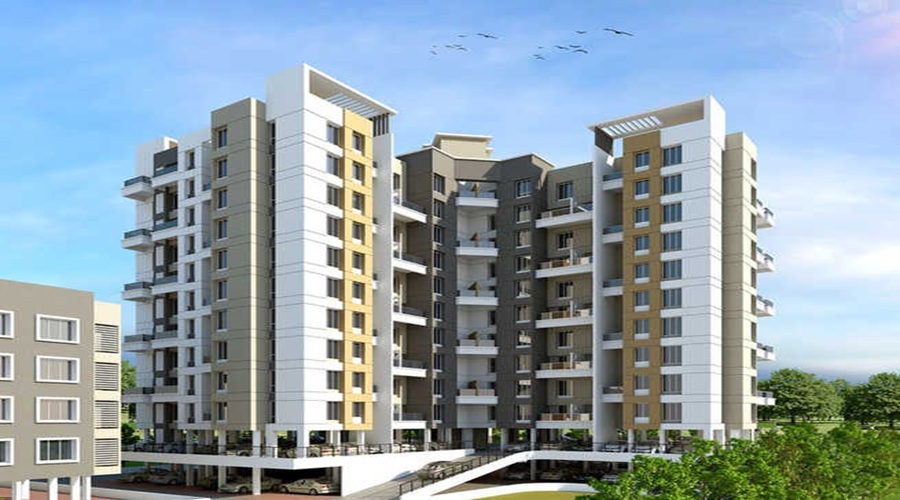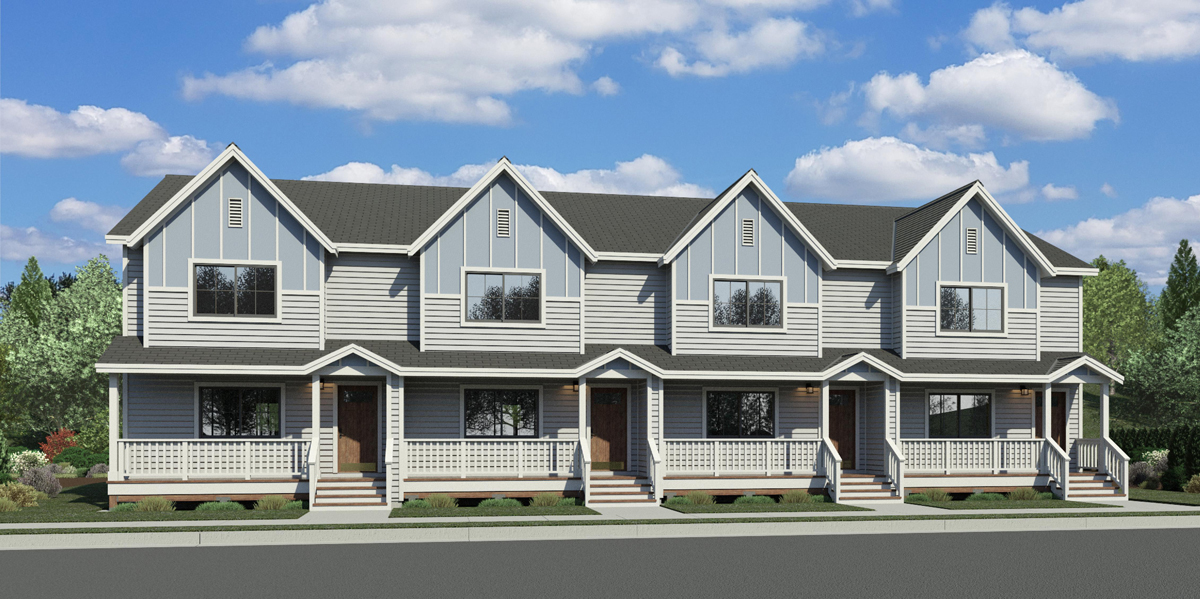Real Estate
What Bess Freedman Says About Luxury Real Estate in 2024: Trends, Challenges, and Opportunities

What Bess Freedman Says About Luxury Real Estate in 2024: Trends, Challenges, and Opportunities
Introduction: Meet Bess Freedman, the CEO of Brown Harris Stevens
Bess Freedman is not just a real estate leader, but also a champion of social change, philanthropy, and building a culture-first brokerage for agents, staff, and clients. As the CEO of Brown Harris Stevens, the oldest and most prestigious private real estate company in the United States, she oversees more than 2,500 agents and 55 offices across New York, Connecticut, New Jersey, Florida, and California.
Freedman has a remarkable background, having practiced law as an Assistant State’s Attorney and worked as an attorney at Legal Aid Society before joining the real estate industry in 2003. She joined Brown Harris Stevens in 2013 as Senior Vice President and became the company’s first-ever CEO in 2018. Under her leadership, the company has grown in size, revenue, and market share, while maintaining its reputation for excellence, integrity, and service.
Freedman is also a vocal advocate for social justice, diversity, and inclusion in the real estate industry and beyond. She has publicly confronted issues such as sexual harassment, reproductive rights, and racial discrimination, and has supported various causes and organizations, such as the Asian Real Estate Association of America, the LGBTQ+ Real Estate Alliance, and the Real Estate Board of New York’s Diversity Committee. In 2021, she received the REBNY’s Kenneth R. Gerrety Humanitarian Award for her contribution to the community.
In this article, we will learn from Freedman’s insights and perspectives on the luxury real estate market in 2024, covering the trends, challenges, and opportunities that are shaping the industry and the consumer behavior.
Trend 1: Technology 2024: Proptech challenges and profitability pursuit
Technology is a key driver of innovation and transformation in the real estate industry, especially in the luxury segment, where buyers and sellers expect the highest level of convenience, efficiency, and sophistication. However, the proptech sector, which encompasses the various technologies and platforms that facilitate real estate transactions and services, has faced some significant challenges in the past year, such as the Federal Reserve’s rate hikes, the slowdown in venture capital investment, and the housing market’s conditions, characterized by soaring prices and limited availability.
According to Freedman, proptech companies need to focus on their profitability and sustainability in 2024, rather than relying on external funding and valuation. She believes that proptech companies should expand their product offerings and invest in consumer education to navigate the housing market slowdown and differentiate themselves from the competition. She also emphasizes the importance of partnering with established and reputable real estate firms, such as Brown Harris Stevens, to leverage their expertise, network, and reputation.
Freedman also predicts that some of the technologies that will have the biggest impact in 2024 are data-driven property management, remote work, cybersecurity, artificial intelligence, and augmented reality. These technologies will enable real estate professionals and consumers to optimize rents, maintenance schedules, tenant satisfaction, flexibility, freedom, data protection, decision-making, predictive analytics, and property visualization.

Image by: https://www.realestate.com
Trend 2: The emergence of secondary markets will challenge the traditionally popular locales in 2024
One of the most notable trends in the luxury real estate market in 2024 is the emergence of secondary markets, which are smaller and less established markets that offer more affordable and diverse options for buyers and sellers. These markets are driven by the increased migration of people, especially millennials and baby boomers, who are looking for more space, privacy, amenities, and lifestyle choices, as well as the rise of remote work, which allows people to work from anywhere.
Freedman observes that some of the secondary markets that are gaining popularity in 2024 are Austin, Nashville, Denver, Miami, and Palm Beach. These markets offer a combination of factors that appeal to luxury buyers, such as lower taxes, warmer climates, cultural diversity, entertainment options, and business opportunities. Freedman also notes that these markets are attracting more investment and development, creating more supply and demand for luxury properties.
Freedman advises that real estate professionals and consumers who are interested in secondary markets should do their due diligence and research before making any decisions. She suggests that they should consider the market conditions, the local regulations, the neighborhood characteristics, the property features, and the potential risks and returns of each market. She also recommends that they should work with experienced and knowledgeable agents who have access to the best resources and information.
Trend 3: Style trends that will define luxury homes in 2024
Style is another important aspect of the luxury real estate market in 2024, as buyers and sellers are looking for homes that reflect their personal tastes, preferences, and lifestyles. According to a 2023 report by the Coldwell Banker Global Luxury program, some of the style trends that will define luxury homes in 2024 are:
- Glamorous architecture: Luxury buyers are drawn to homes that have distinctive and dramatic architectural features, such as curved walls, soaring ceilings, glass walls, spiral staircases, and geometric shapes. These features create a sense of grandeur, elegance, and uniqueness, as well as enhance the natural light and views of the property.
- Culinary-chic spaces: Luxury buyers are also looking for homes that have state-of-the-art kitchens and dining areas, where they can entertain and enjoy their culinary passions. These spaces are equipped with high-end appliances, custom cabinetry, marble countertops, wine cellars, and smart technology. They also have spacious and comfortable seating areas, where guests can mingle and relax.
- Exo-luxe design: Luxury buyers are also interested in homes that have a fusion of fashion and real estate, where the interior design is influenced by the style and personality of the owner. This trend, called exo-luxe, is exemplified by homes that feature branded furniture, artwork, accessories, and fabrics, creating a cohesive and customized look.
Freedman states that style is a subjective and personal matter, and that luxury buyers should choose homes that suit their needs and desires, rather than following the trends blindly. She also advises that luxury sellers should consult with professional stagers and designers, who can help them showcase their homes in the best possible way, highlighting the features and benefits that appeal to the target market.

Image by: https://www.realestate.com
Trend 4: Luxury housing and Tier 2 cities to lead realty sector growth in 2024
Another trend that will reshape the real estate market in 2024 is the growth of luxury housing and Tier 2 cities, which are smaller and less developed cities that offer more opportunities and potential for real estate development and investment. According to a report by Knight Frank, the luxury housing segment in India is expected to grow by 10% in 2024, driven by the increasing demand from high-net-worth individuals, the improving infrastructure and connectivity, and the favorable policies and incentives. Some of the cities that are witnessing a surge in luxury housing are Pune, Hyderabad, Ahmedabad, and Kochi.
Freedman believes that luxury housing and Tier 2 cities are attractive options for real estate professionals and consumers who are looking for new and emerging markets that offer more value and diversity. She says that these markets have a lot of potential and promise, as they are experiencing rapid urbanization, economic growth, social development, and cultural vibrancy. She also points out that these markets are more affordable and accessible, compared to the saturated and expensive Tier 1 cities, such as Mumbai, Delhi, and Bangalore.
Freedman cautions that luxury housing and Tier 2 cities are not without challenges and risks, such as the lack of regulation, transparency, and quality standards, the environmental and social impacts, and the political and economic uncertainties. She advises that real estate professionals and consumers who are interested in these markets should be careful and diligent, and seek the guidance and support of reputable and reliable partners, such as Brown Harris Stevens, who have the expertise, experience, and network to help them navigate the complexities and opportunities of these markets.
Trend 5: Exclusive and tailored service
The last trend that will define the luxury real estate market in 2024 is the demand for exclusive and tailored service, which is the hallmark of living with Four Seasons Private Residences. Four Seasons Private Residences offers private homes set in iconic cities, secluded beach communities, mountain retreats, modern metropolises, and plenty of desirable spots in between. These homes are not only luxurious and comfortable, but also come with the unparalleled service and amenities that Four Seasons is known for.
Freedman explains that living with Four Seasons means that you can rely on a dedicated team to anticipate your every need, building lasting and trusted relationships along the way. Whether it’s booking a table at your favorite restaurant, preparing a custom menu, or arranging a private jet, you can expect nothing but the best from Four Seasons. In addition, you can also enjoy the benefits of being part of a global community of like-minded homeowners, who share your passion for travel, culture, and lifestyle.
Freedman also reveals that living with Four Seasons is not limited to when you’re home. Whenever you find yourself away, you can rest easy knowing that your residence is always in expert hands. When you’re gone, the on-site team manages your property to the highest standards. And when it’s time to come back, you can expect everything to be perfectly ready for you, including your favorite groceries stocked in the kitchen.
Summary: What Bess Freedman Says About Luxury Real Estate in 2024
In this article, we have learned from Bess Freedman, the CEO of Brown Harris Stevens, about the latest trends, challenges, and opportunities in the luxury real estate market in 2024. Here are the main points we have covered:
- Technology 2024: Proptech companies need to focus on profitability and sustainability, and leverage the technologies that enhance property management, remote work, cybersecurity, artificial intelligence, and augmented reality.
- Secondary markets: Smaller and less established markets, such as Austin, Nashville, Denver, Miami, and Palm Beach, are gaining popularity among luxury buyers, who are looking for more affordable and diverse options, driven by lower taxes, warmer climates, cultural diversity, entertainment options, and business opportunities.
- Style trends: Luxury buyers are drawn to homes that have glamorous architecture, culinary-chic spaces, and exo-luxe design, which reflect their personal tastes, preferences, and lifestyles.
- Luxury housing and Tier 2 cities: Luxury housing segment in India is expected to grow by 10% in 2024, driven by the increasing demand from high-net-worth individuals, the improving infrastructure and connectivity, and the favorable policies and incentives. Tier 2 cities, such as Pune, Hyderabad, Ahmedabad, and Kochi, offer more opportunities and potential for real estate development and investment.
- Exclusive and tailored service: Living with Four Seasons Private Residences means that you can enjoy the unparalleled service and amenities that Four Seasons is known for, as well as the benefits of being part of a global community of like-minded homeowners. You can also rely on a dedicated team to take care of your property and your needs, whether you’re home or away.
We hope that you have enjoyed reading this article and learned something new and useful. If you have any questions or comments, please feel free to share them with us. Thank you for your time and attention.
Real Estate
Property in Pune: Your Complete Guide to Buying the Best Homes

Introduction
Pune has grown into one of India’s most dynamic cities, attracting homebuyers and investors from across the country. Known for its pleasant climate, modern infrastructure, and booming IT and education sectors, the demand for property in Pune has risen steadily over the years. Whether you’re looking for a residential apartment, a luxury flat, or commercial property, Pune offers a perfect mix of lifestyle and investment opportunities.
At Properties Dekho, we bring you verified listings of property in Pune for sale to help you make confident and informed decisions. From affordable 1 BHK homes to premium 4 BHK apartments, our platform covers every segment of Pune’s thriving real estate market.
Why Choose Pune for Real Estate Investment
When it comes to stability and long-term value, few cities match Pune’s potential. The city combines modern living with a balanced lifestyle, making it ideal for both working professionals and families. If you’re planning to buy property in Pune, here’s why it’s one of the best choices you can make:
- IT and Industrial Growth: Pune’s booming IT corridor in Hinjewadi, Kharadi, and Magarpatta has created huge housing demand.
- Educational Excellence: Renowned institutions attract students and families, ensuring consistent rental returns and property appreciation.
- Quality Infrastructure: Smooth roads, metro connectivity, and green surroundings make it one of the most liveable cities in India.
- High ROI Locations: The property rates in Pune continue to appreciate across all major localities, offering great returns on investment.
These factors have transformed Pune from a peaceful city into a thriving metropolitan hub for real estate investment.
Buy Property in Pune: Options for Every Lifestyle
The Pune property market caters to everyone from first-time buyers to luxury seekers. Whether you want a modern apartment, a villa, or a commercial office space, you’ll find plenty of property in Pune for sale that fits your budget and lifestyle.
- Affordable Apartments: Ideal for small families or individuals who want a comfortable home at a reasonable price.
- Luxury Homes: Premium flats and penthouses in areas like Baner, Kalyani Nagar, and Koregaon Park offer top-notch amenities and style.
- Villas & Row Houses: Spacious living options in areas like Wagholi and Hadapsar combine peace with accessibility.
- Commercial Properties: Ideal for startups and established businesses looking for office space in Pune’s fast-developing zones.
Understanding Property Rates in Pune
Before you invest, it’s important to understand property rates in Pune. Prices vary widely depending on the location, infrastructure, and project type. Premium areas like Kharadi, Baner, and Aundh command higher prices, while developing localities such as Wagholi, Hinjewadi, and Hadapsar offer affordable options.
In the last few years, Pune’s real estate market has shown steady price appreciation due to rising employment opportunities and infrastructure growth. The metro expansion and road connectivity projects have further boosted the value of property in Pune for sale, making now a great time to invest.
Top Localities to Buy Property in Pune
Choosing the right location is key to a successful investment. Some of the most preferred areas for buying property in Pune include:
- Hinjewadi: The IT hub of Pune with numerous new housing projects and great connectivity.
- Kharadi: A rapidly developing area known for modern living and proximity to EON IT Park.
- Baner: Offers premium lifestyle amenities, great road access, and strong appreciation value.
- Hadapsar: Affordable and well-connected, perfect for first-time buyers.
- Wakad: Popular among families for its schools, shopping centers, and easy access to the Mumbai-Pune Expressway.
- Koregaon Park: A symbol of luxury living and elite lifestyle in Pune.
These localities offer everything a modern homebuyer looks for—convenience, safety, and value growth.
Buy Property in Pune with Properties Dekho
At Properties Dekho, our mission is to make your home-buying journey effortless and rewarding. We list genuine and verified properties across Pune to help you find your dream home without stress.
Why Choose Us:
- 100% verified property listings.
- Real-time updates on property rates in Pune.
- Expert consultation and property comparisons.
- Assistance with site visits, paperwork, and financing.
- Wide range of properties – from affordable flats to luxury villas.
Our platform makes it easy to browse, compare, and buy property in Pune that suits your lifestyle and budget.
Future of Real Estate in Pune
The future of Pune’s real estate market looks promising. With ongoing development projects, rising employment, and improved infrastructure, property rates in Pune are expected to continue increasing. Investors are showing growing interest in Pune’s outskirts such as Wagholi, Ravet, and Tathawade, which offer modern projects at affordable prices.
The city’s growing tech industry ensures consistent demand for property in Pune for sale, making it a smart long-term investment for both residents and non-resident Indians (NRIs).
Conclusion
Pune is more than just a city it’s a lifestyle destination where modern living meets peace and opportunity. Whether you’re planning to buy property in Pune for personal use or investment, the city offers unmatched potential and comfort.
Also Read: construction company in Lahore
Real Estate
Why Custom Home Builders Define Luxury and Comfort

Introduction
In today’s world, true luxury isn’t about marble floors or chandeliers it’s about personalization, experience, and comfort tailored to the way you live. The custom home builders leading this movement have redefined what luxury means in residential design. They understand that comfort is not one-size-fits-all, and that elegance lies in the details crafted specifically for each homeowner.
The best custom home builders don’t simply create houses; they design personal sanctuaries that balance opulence with ease. Their artistry lies in transforming dreams into physical spaces where every material, layout, and finish feels intuitive and deeply personal.
Luxury today isn’t about excess it’s about harmony. And that’s precisely what skilled custom builders deliver.
The New Meaning of Luxury in Home Design
1. Beyond Aesthetics: A Matter of Experience
Luxury used to mean visible extravagance—grand staircases, ornate details, and glossy finishes. But modern luxury, as envisioned by custom home builders, is quieter and more meaningful. It’s the ability to live comfortably and beautifully, surrounded by spaces that reflect your life, values, and rhythms.
A luxurious home today feels effortless. It flows naturally, adapts to your needs, and supports a sense of calm. It’s built with materials that age gracefully, technology that simplifies daily life, and craftsmanship that never needs attention yet always commands it.
2. Tailored for the Individual
The best custom home builders redefine luxury by designing from the inside out. Instead of imposing trends, they start with you—the way you cook, entertain, work, rest, and move through space. Every design decision, from the orientation of a window to the placement of a reading nook, responds to your habits and aspirations.
Personalization is the new prestige. And in that sense, the truest luxury is individuality.
Craftsmanship as the Foundation of Comfort
1. Built, Not Manufactured
There’s a world of difference between a house that’s built and one that’s produced. The custom home builders who excel know that comfort begins long before the first wall goes up. It’s embedded in the planning, precision, and attention to detail that define handcrafted construction.
Every curve, joinery, and texture is deliberate. These builders view a home as a long-term companion, not a commodity. That devotion to craftsmanship ensures that comfort isn’t just felt—it’s built into the DNA of the structure.
2. Materials That Speak of Quality
Luxury is tactile. It’s the feel of solid wood underfoot, the smooth glide of a perfectly fitted door, the quiet confidence of natural stone. The best custom home builders choose materials not just for their look, but for their longevity and emotional resonance.
Whether it’s reclaimed timber with a story or sustainably sourced marble that glows in natural light, every material is a reflection of care. When chosen thoughtfully, materials make a home feel warm, grounded, and timeless.
The Science Behind Seamless Comfort
1. Smart Design Meets Smart Living
Luxury today isn’t loud it’s intelligent. Modern custom home builders integrate cutting-edge technologies that simplify life without overwhelming it. From climate control systems that learn your preferences to lighting that adjusts to your mood, comfort now extends beyond physical design to digital responsiveness.
A truly luxurious home anticipates your needs. It opens the blinds as the sun rises, warms the floors before you step out of bed, and keeps you secure with subtle automation. The best custom home builders know how to weave technology into the home’s fabric so it enhances daily living without ever intruding.
2. Spatial Psychology: Comfort Through Design
Luxury isn’t always visible it’s often felt subconsciously. Great builders understand how proportions, lighting, acoustics, and flow shape emotional comfort.
Spaces that breathe, transitions that feel natural, and layouts that promote togetherness or solitude when needed—these design choices elevate not just aesthetics but wellbeing. Most custom home builders use science-backed design principles to create homes that are intuitively livable and emotionally satisfying.
The Balance of Beauty and Function
1. Form That Serves Function
Luxury fails when it sacrifices usability. The genius of great custom home builders lies in balancing elegance with everyday practicality. A stunning kitchen is worthless if it doesn’t make cooking enjoyable; a spa-like bathroom must also function flawlessly under daily use.
The best custom home builders approach every design decision through the lens of livability. They ensure storage is hidden but accessible, lighting flatters both space and people, and materials endure without constant upkeep.
This seamless blend of beauty and purpose defines comfort at its highest level.
2. Outdoor Spaces as Extensions of Living
True luxury living no longer stops at the threshold. Custom builders design landscapes and outdoor areas as natural continuations of the home spaces for relaxation, connection, and retreat.
From covered patios with integrated kitchens to serene garden lounges and infinity-edge pools, every outdoor feature complements interior design while celebrating nature. The result is comfort that transcends walls—a holistic experience of luxury living.
Collaboration: The Secret Ingredient of Great Builders
1. Listening as an Art
What sets custom home builders apart from ordinary contractors is their ability to listen deeply. Luxury homes are never dictated—they are co-authored. The builder becomes a creative partner, understanding not just the client’s vision but their lifestyle, aesthetic preferences, and emotional desires.
This collaboration ensures that every decision, from architectural flow to fixture selection, resonates personally. The best custom home builders translate conversations into architecture, turning words like “warm,” “open,” or “welcoming” into tangible spaces that evoke those exact feelings.
2. Managing Complexity Gracefully
Behind the serenity of a finished luxury home lies a complex choreography of architects, designers, craftsmen, and engineers. The finest builders manage this dance effortlessly.
Their expertise lies in uniting all disciplines toward one coherent vision. They anticipate problems before they arise, maintain transparency, and protect the client’s peace of mind. That level of professionalism—rare and refined—is itself a form of comfort.
Sustainability: The New Face of Luxury
1. Building Responsibly for the Future
Luxury is evolving to include conscience. The custom home builders defining the modern era understand that true sophistication respects the planet. Sustainable design has become an intrinsic part of comfort, offering both ecological and emotional value.
The best custom home builders use eco-friendly materials, design for energy efficiency, and incorporate renewable systems like solar and geothermal energy. They build homes that breathe naturally, maintain consistent indoor climates, and minimize waste during construction.
A sustainable home feels good to live in—and even better to know it’s kind to the earth.
2. Wellness as a Design Principle
Beyond sustainability, comfort now includes health. Great builders are incorporating wellness architecture: air purification, water filtration, natural light optimization, and acoustically balanced rooms.
These innovations create spaces that not only look luxurious but also nurture physical and mental well-being. In essence, luxury becomes synonymous with living well.
Conclusion: The True Definition of Modern Luxury
Luxury and comfort today are defined by authenticity, craftsmanship, and emotional connection. The custom home builders shaping this new standard know that beauty means nothing without livability, and that comfort must be personal, not generic.
The best custom home builders understand that the real art lies in making complexity look effortless. Through their vision, homes become sanctuaries places that inspire, embrace, and endure.
Luxury is no longer about what you have, but how it feels to live within it. And that feeling begins with the hands, hearts, and minds of custom builders who understand both the science of space and the soul of home.
Real Estate
Smart Choice Brand New Townhouse in Riverstone for First-Time Buyers
-
Business2 years ago
Cybersecurity Consulting Company SequelNet Provides Critical IT Support Services to Medical Billing Firm, Medical Optimum
-
Business2 years ago
Team Communication Software Transforms Operations at Finance Innovate
-
Business2 years ago
Project Management Tool Transforms Long Island Business
-
Business2 years ago
How Alleviate Poverty Utilized IPPBX’s All-in-One Solution to Transform Lives in New York City
-
health2 years ago
Breast Cancer: The Imperative Role of Mammograms in Screening and Early Detection
-
Sports2 years ago
Unstoppable Collaboration: D.C.’s Citi Open and Silicon Valley Classic Unite to Propel Women’s Tennis to New Heights
-
Art /Entertainment3 years ago
Embracing Renewal: Sizdabedar Celebrations Unite Iranians in New York’s Eisenhower Park
-
Finance3 years ago
The Benefits of Starting a Side Hustle for Financial Freedom































